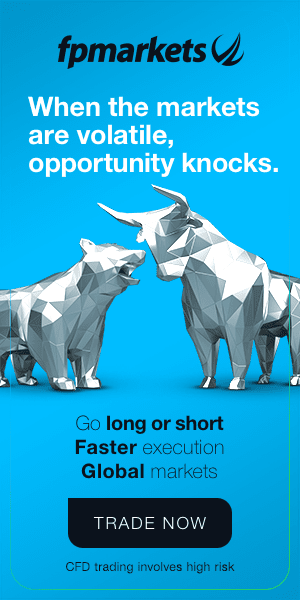OPENING CALL: The Australian share market is expected to open lower. The SPI Futures is expected to be down 135 points.
WeWork’s parent company unveiled the papers for its initial public offering, depicting a firm whose revenue growth is steep but whose losses have grown substantially as well.
Glencore has lost a bid to stop Australia’s tax office from using documents that detail some of its offshore financial arrangements, as its case was dismissed by the country’s high court.
Overnight Summary
Each Market in Focus
Late gains pushed Australian shares into positive territory and erased Tuesday’s decline, as global-growth fears ebbed after President Trump delayed imposing some tariffs on Chinese goods.
The S&P/ASX 200 closed 0.4% higher at 6595.9 and is up 0.2% so far this week.
A 6.6% rally by CSL to a record after higher annual profit helps drove the market, and countered a 3.6% drop by Commonwealth Bank of Australia and a 2.4% fall by Suncorp Group as each traded ex-dividend.
The pace of earnings releases ramps up Thursday, with results due from ASX, QBE Insurance, Telstra, Treasury Wine Estates and Woodside Petroleum, among others.
U.S. stocks slumped intraday and Treasury markets sent a new recession signal after weak German and Chinese economic data stoked fears of an impending global slowdown.
The Dow Jones Industrial Average dropped more than 700 points, or 2.8%, while the yield on the U.S. 30-year Treasury bond fell to a record low.
The drops erased the optimism sparked a day earlier when the Trump administration abruptly suspended plans to impose new tariffs on goods from China and suggest the volatile swings that have defined trading in August are showing no signs of easing.
Trade tensions between the U.S. and China, uncertainty about the Federal Reserve’s interest-rate policy and signs of slowing economic growth have spurred weeks of turbulence that have rippled through the stock, bond and currency markets since major stock indexes hit all-time highs in mid-July.
Gold futures logged their highest finish since 2013 after another round of downbeat economic data, and as the temporary inversion of the main measure of the U.S. Treasury yield curve raised the risk of a recession.
Gold for December delivery on Comex rose $13.70, or 0.9%, to settle at $1,527.80 an ounce after losing 0.2% on Tuesday. The settlement was the highest for a most-active contract since April 11, 2013, according to FactSet data. September silver added 29.5 cents, or 1.7%, to $17.28 an ounce.
In other commodity markets, September wheat prices were up 1 3/4 cents at $4.73 3/4 cents.
Oil prices slid, falling alongside stocks and other risky assets, after downbeat economic news from China and Germany fueled fresh worries about a slowdown in global growth.
Emerging markets and oil-sensitive currencies fell intraday as recession fears grew after weak German and Chinese economic data stoked fears of an impending global slowdown.
The Brazilian real, Russian ruble, Norwegian krone and South African rand — all currencies of commodity-producing countries — were down 1% or more against the dollar following a steep drop in oil prices.
The Argentine peso was down around 5% after recording one of its biggest drops on record earlier in the week. Investors piled into haven currencies, driving the Japanese yen and Swiss franc higher.
The WSJ Dollar Index was recently up 0.15% at 91.12.
European stocks fell after data showed the German economy shrank in the second quarter.
The Stoxx Europe 600 dropped 1.7%, while the German DAX fell 2.2%. The U.K. FTSE 100 skidded 1.42% to 7147.88 and the French CAC 40 tumbled 2.22% to 5243.84.
Asian stocks climbed after the White House abruptly changed course to delay tariffs on Chinese imports, but European indexes slipped as data showed the German economy shrank in the second quarter.
The Trump administration on Tuesday suspended its plans for new tariffs from September to December, sending U.S. indexes higher. Stocks in Asia followed suit, with shares in Shanghai up 0.4% and Japan’s Nikkei up 1%.
Hong Kong’s Hang Seng was an outlier in the region to trade nearly flat, as the city continued to struggle with protests and violence.
Japanese stocks close higher as trade tensions ease on the U.S. plans to delay tariffs on some Chinese goods. The Nikkei Stock Average closed up 1.0% at 20655.13. Most of the 33 Topix sectors end higher.
South Korea’s benchmark Kospi closed up 0.7% at 1938.37, buoyed by renewed hopes of trade tensions easing with the U.S. decision. However, gains were limited and pared by weaker-than-expected Chinese economic data, Seo Sang-young, an analyst with Kiwoom Securities said. Investors will likely be on the sidelines in the coming week as trade issues are still lingering, he said.
Hong Kong shares closed higher. Technology companies led the gains, with Sunny Optical up 8.7%, making it the best performing stock of the day on the index. Malaysian stocks rebounded from Tuesday’s nearly four-year low to end above the 1600 psychological mark.
Market breadth was positive, with gainers beating losers 450 to 319. The Kuala Lumpur Composite Index closed 0.5% higher at 1600.31.
And Singapore’s benchmark share index closed flat, brushing aside gains in several Asian markets, as investors remain cautious about slowing economic growth. The Straits Times Index gave up its gains from earlier in the day to close almost unchanged at 3147.60. Commodities stocks were broadly lower.






 Access +10,000 financial
instruments
Access +10,000 financial
instruments

